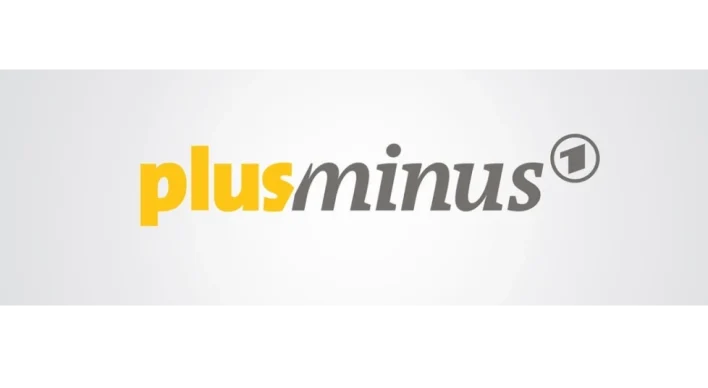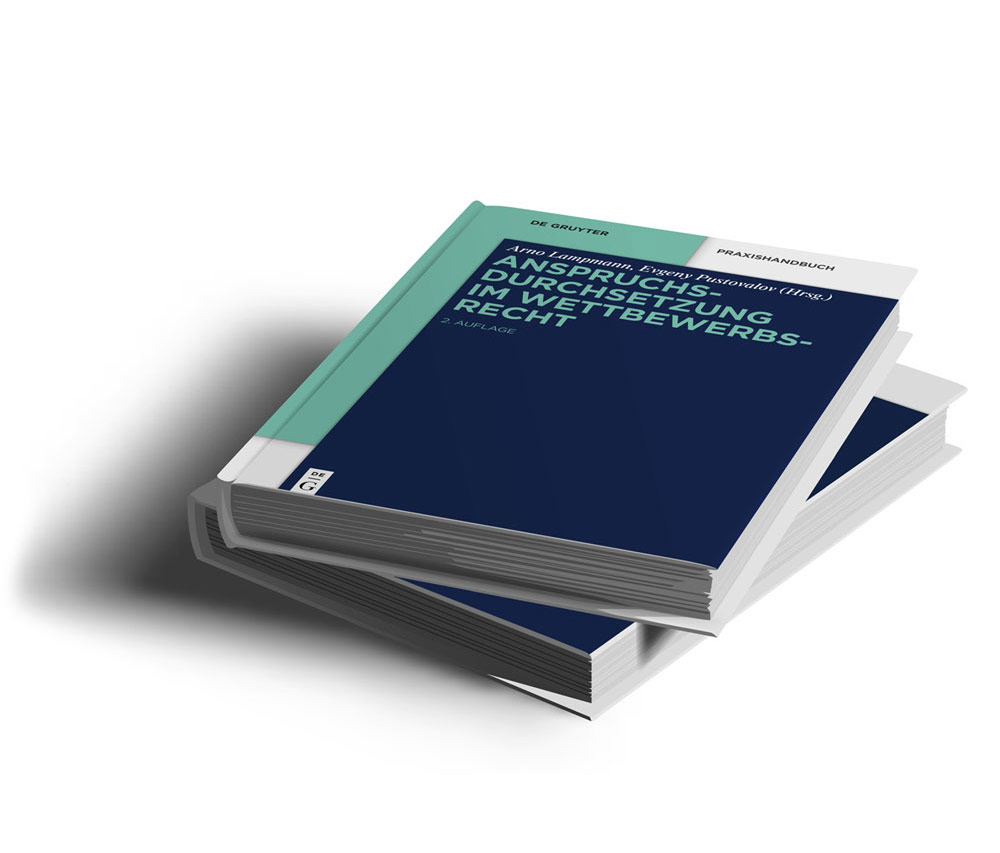Everyday life in a law firm from the perspective of our legal trainee – Episode 4: Caution, error pre-programmed? The anti-ribery law

The warning letter – During my internship at the law firm, I hear this term every day, as it is used particularly often in trade mark, competition or copyright law. The term is probably also familiar to many internet users. A survey by the Federal Association of Consumer Centres shows: Around 4.3 million Germans have already received a warning in recent years. According to surveys carried out by the ‘Interessengemeinschaft gegen den Abmahnwahn’ (interest group against warning letters), almost 110,000 warning letters were sent out in 2013 with claims totalling over 86 million euros. No wonder that most people only associate a warning letter with negative things.
What is a warning letter?
A warning letter is a formal request to a person to cease and desist from certain behaviour or actions. For example, the rights holder of a film can request a private internet user in a legal document to stop making a music title available illegally on the internet. A pre-formulated cease-and-desist declaration is usually part of the warning letter. If the person being warned has not signed this by a certain deadline, they are threatened with further legal action. By signing a cease-and-desist declaration, on the other hand, he undertakes to refrain from the unlawful behaviour of which he is accused in future. However, the biggest disputes arise over the costs demanded from the person being warned:
How are the costs of a warning letter calculated?
The costs of a warning letter are made up of two parts: the warning fee and the compensation. The warning fee arises from the lawyer’s fees and the lump sum for expenses – i.e. if the infringed party instructs a lawyer to issue the warning. This lawyer must be paid accordingly. If the warning is justified or is accepted and the other formal requirements under Section 97a of the Copyright Act are met, the infringed party can demand reimbursement of the warning fee from the warned party. Damages in copyright law, for example, are calculated using the so-called ‘licence analogy’, namely in accordance with Section 97 (2) sentence 3 UrhG:
‘on the basis of the amount (…) which the infringer would have had to pay as reasonable remuneration if he had obtained permission to use the infringed right’.
The amount of compensation is therefore not fixed at a specific value.
On average, more than 800 euros have been claimed in this way from many of those warned – mostly private internet users. No wonder that many consumers often had the impression that the rights holders and their lawyers were less concerned with the actual purpose of the warning, namely to stop the infringement. Rather, the focus seemed to be on the payments demanded. In quite a few cases, these and the number of warning letters were deliberately inflated by the warning parties – hence the term ‘warning letter warning’ or ‘warning letter industry’. Since 9 October 2013, however, the ‘Anti-Abzocke Act’ has prescribed new rules for the costs of warning letters.
What is the ‘anti-ribery law’?
The ‘Anti-Rip-off Law’, officially the ‘Law against Dubious Business Practices’, was intended to tackle three problems, including unsolicited telephone advertising and the dubious methods of debt collection companies as well as the ‘warning letter craze’. In the interests of consumers, it should, among other things, put an end to the business of excessive warning letters. Accordingly, the warning fees should normally not exceed 124 euros plus VAT. The so-called extrajudicial value in dispute, according to which this warning fee is determined, was limited to 1000 euros. These regulations apply to private consumers for the first warning letter case. Furthermore, according to the law, the proceedings, if at all, must take place at the domicile of the warned user. The rights holder cannot choose any court in Germany for his lawsuit, as was previously the case.
Extract from Section 97a of the Copyright Act under the Anti-Rip-off Act:
‘(3) If the warning is justified and complies with paragraph 2 sentence 1 numbers 1 to 4, reimbursement of the necessary expenses may be demanded. For the use of legal services, the reimbursement of the necessary expenses with regard to the statutory fees shall be limited to fees according to an object value for the injunctive relief and removal claim of 1,000 euros if the person being warned
1. is a natural person who does not use works protected under this Act or other subject matter protected under this Act for his commercial or independent professional activity, and
2. is not already obliged to cease and desist on the basis of a claim of the person issuing the warning notice by contract, on the basis of a legally binding court decision or an interim injunction.
The value stated in sentence 2 shall also be decisive if a claim for injunctive relief and a claim for removal are asserted in parallel. Sentence 2 shall not apply if the stated value is unreasonable in the particular circumstances of the individual case.’
What has the ‘anti-ribery law’ achieved?
This is precisely the question posed by lawyer Biesterfeld-Kuhn from LHR in the ‘Law Check’ of the ARD programme ‘Ratgeber Recht’ from 9 August 2014.
In his assessment of the law, LHR lawyer Biesterfeld-Kuhn addresses all three problems that the Anti-Rip-off Law was supposed to solve – and comes to the sobering conclusion that only the dubious methods of debt collection companies have been firmly restricted. The Anti-Rip-off Act does not protect against both unwanted advertising calls and overpriced warnings to the extent that the name promises.
While many consumers are lulled into a supposedly secure legal position, they do not realise that the 124 euros plus VAT only covers the warning fees. However, in addition to these warning fees, damages are also payable. And its amount is not fixed by law. Another catch is that the maximum amount in dispute, according to which the warning fee is determined, is 1,000 euros, as mentioned above. However, the last clause in Section 97a of the Copyright Act allows exceptions, namely:
‘if the stated value is unreasonable in the particular circumstances of the individual case.’
The law therefore also allows higher fees in individual cases – and what counts as an exception is not clearly defined. This means that the party issuing the warning can continue to set the additional costs to the 124 euros plus VAT higher themselves, as long as they can find a justification for this. The individual courts will decide whether the justification is sufficient. For example, the rights holder demanded warning fees for the fourth season of the series ‘The Walking Dead’ from a value in dispute of 15,000 euros. His reasoning: The fee cap did not apply to this case because the series was red-hot. The decision as to whether increased warning fees are permitted on ‘equitable grounds’ will ultimately be made by the individual courts.
The problems surrounding the undefined legal terms in the warning regulation have been known for some time, as has the discussion surrounding the capping of lawyers’ fees. As early as 2008, the fee cap provision of Section 97a (2) of the Copyright Act came into force, according to which the reimbursement of lawyers’ fees for the first warning “in simple cases with only a minor infringement of rights outside the course of trade” should be limited to EUR 100.
What are the consequences of the ‘anti-ribery law’?
Since the introduction of the law, individual warnings seem to have become more frequent, writes the Kölnische Rundschau. Instead of claiming damages for the illegal sharing of an entire TV series on the Internet, for example, some rights holders tend to charge costs for each individual episode of the series.
Instead of the warning fees themselves, which may not exceed 124 euros plus VAT, the claims for damages in the event of a warning have increased since the Anti-Rip-off Act came into force. Their assessment is not stipulated by law, but is left to the individual courts. For consumers, this means that the total costs of a warning letter remain as high as before the introduction of the anti-ribery law.
Attention, error pre-programmed!
Consumers are therefore exposed to a danger that they can do something about themselves! For those who only skimmed the initial reports on the anti-ripping law could easily get the impression that warnings were now less of a threat. After all, there was talk of ‘more protection against warnings’, ‘capping fees’ and ‘last-minute consumer protection’. It can then happen very quickly that consumers believe they have a false sense of security. This security could, for example, lead to a more careless approach to illegal file sharing, as shown in the article ‘Kostenfalle Tauschbörse’ in the ARD programme ‘plusminus’ from 20 August 2014
But despite the anti-ribery law, you shouldn’t be tempted to do so. The ‘even if I get caught, I’ll only pay 124 euros’ attitude is dangerous and wrong. The easiest way to avoid overpriced warnings remains the same: stay away from illegal downloads and file sharing. (he)
(Image: ©Stuart Miles/shutterstock.com)








